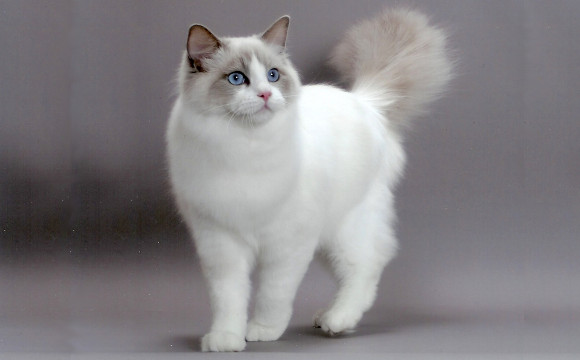Introduction
Ragdoll cats are a popular breed known for their gentle temperament and striking blue eyes. Originating in the 1960s, these cats have a unique history and several distinctive traits that make them ideal companions. This article will delve into the Ragdoll’s history, physical characteristics, personality, and care needs, providing a thorough overview for potential cat owners and enthusiasts.
History of the Ragdoll Cat
The Ragdoll breed’s history is shrouded in controversy and interesting tales. The breed was established by Ann Baker, who bred a white Angora-type cat named Josephine with other longhaired cats in Riverside, California. There are various stories about Josephine’s origins, including a tale where she was genetically altered after a car accident. However, no scientific evidence supports these claims. The most credible account suggests Josephine mated with several feral cats, producing kittens with the desired Ragdoll traits.
In 1971, Baker created the International Ragdoll Cat Association (IRCA) and trademarked the Ragdoll name. Despite controversies, the breed gained popularity, and factions of breeders formed different clubs to gain recognition from traditional registries. Today, Ragdolls are recognized by major cat associations worldwide.
Physical Characteristics
Ragdolls are large, muscular cats with semi-longhair coats that are soft and silky. They come in four traditional colors: seal, chocolate, blue, and lilac, and three patterns: colorpoint, mitted, and bicolor.
- Colorpoint: Darker points on the ears, face, paws, and tail, with a lighter body color.
- Mitted: Similar to colorpoint but with white mittens on the paws and a white chin and belly.
- Bicolor: White inverted “V” on the face, with white legs, chest, and belly, and darker points on the ears, face, and tail.
Ragdolls have bright blue eyes, which are one of their most distinctive features.
Personality and Temperament
Ragdolls are known for their docile and affectionate nature. They are often described as “puppy-like” because they enjoy following their owners around and being involved in family activities. They are highly social, getting along well with children, other cats, and even dogs. Ragdolls are not overly vocal but will communicate in soft, pleasant tones.
These cats are also known for their tendency to go limp when picked up, resembling a child’s rag doll, which is how they got their name. They are playful but not hyperactive, making them ideal indoor companions.
Care and Maintenance
Ragdolls require regular grooming to maintain their coat’s health and prevent matting. A weekly brushing session is usually sufficient. They are generally healthy cats but can be prone to certain genetic conditions, such as hypertrophic cardiomyopathy (HCM). Regular veterinary check-ups and a healthy diet are crucial for their well-being.
- Grooming: Weekly brushing, nail trimming, and dental care.
- Diet: High-quality cat food, balanced diet, and fresh water.
- Exercise: Interactive toys and playtime to keep them mentally and physically stimulated.
Training and Socialization
Ragdolls are intelligent and can be easily trained. They can learn tricks, commands, and even how to walk on a leash. Early socialization and positive reinforcement techniques work best for training these cats.
- Training Tips:
- Use treats and praise to encourage good behavior.
- Provide scratching posts to prevent destructive scratching.
- Teach them to stay off counters and furniture.
Health and Lifespan
Ragdolls have a lifespan of 12-17 years. They are generally healthy but can suffer from specific genetic conditions. Regular vet visits, a balanced diet, and plenty of exercises are essential to ensure a long and healthy life.
- Common Health Issues:
- Hypertrophic cardiomyopathy (HCM)
- Feline infectious peritonitis (FIP)
- Polycystic kidney disease (PKD)
Regular screenings and genetic testing can help detect these conditions early.
Breeding and Recognition
Ragdolls are bred to maintain their distinctive traits and gentle temperament. They are recognized by major cat associations, including The International Cat Association (TICA) and the Cat Fanciers’ Association (CFA). Breeding programs focus on health, temperament, and adherence to breed standards.
Conclusion
Ragdoll cats are a wonderful addition to any home, thanks to their gentle nature, striking appearance, and loving personality. They require regular grooming and veterinary care to stay healthy but are generally low-maintenance pets. Whether you’re a first-time cat owner or an experienced feline enthusiast, a Ragdoll can make a delightful and loyal companion.
By understanding the Ragdoll’s history, characteristics, and care needs, potential owners can make informed decisions and provide the best environment for these charming cats.

